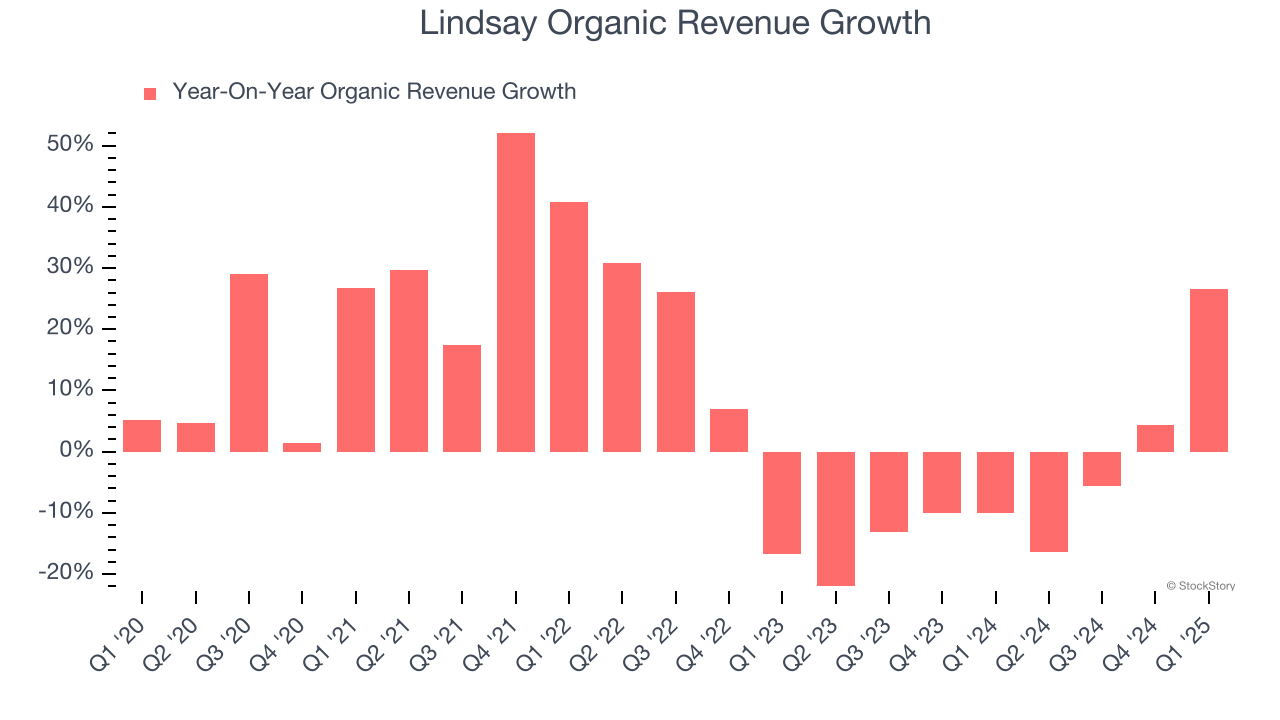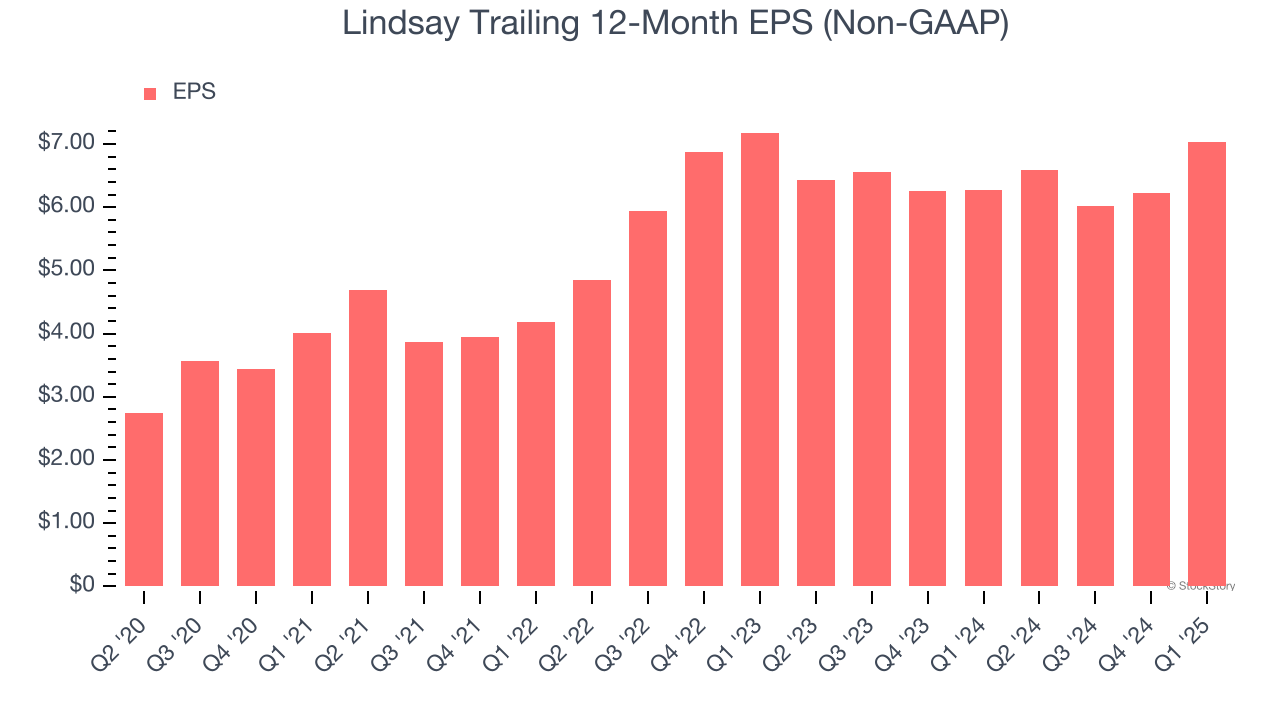
Lindsay currently trades at $134.22 per share and has shown little upside over the past six months, posting a middling return of 4.5%. However, the stock is beating the S&P 500’s 1.6% decline during that period.
Is there a buying opportunity in Lindsay, or does it present a risk to your portfolio? Check out our in-depth research report to see what our analysts have to say, it’s free.
Why Is Lindsay Not Exciting?
Even with the strong relative performance, we're swiping left on Lindsay for now. Here are three reasons why LNN doesn't excite us and a stock we'd rather own.
1. Core Business Falling Behind as Demand Declines
Investors interested in Agricultural Machinery companies should track organic revenue in addition to reported revenue. This metric gives visibility into Lindsay’s core business because it excludes one-time events such as mergers, acquisitions, and divestitures along with foreign currency fluctuations - non-fundamental factors that can manipulate the income statement.
Over the last two years, Lindsay’s organic revenue averaged 5.8% year-on-year declines. This performance was underwhelming and implies it may need to improve its products, pricing, or go-to-market strategy. It also suggests Lindsay might have to lean into acquisitions to grow, which isn’t ideal because M&A can be expensive and risky (integrations often disrupt focus). 
2. Projected Revenue Growth Shows Limited Upside
Forecasted revenues by Wall Street analysts signal a company’s potential. Predictions may not always be accurate, but accelerating growth typically boosts valuation multiples and stock prices while slowing growth does the opposite.
Over the next 12 months, sell-side analysts expect Lindsay’s revenue to stall. Although this projection suggests its newer products and services will spur better top-line performance, it is still below the sector average.
3. EPS Took a Dip Over the Last Two Years
Although long-term earnings trends give us the big picture, we like to analyze EPS over a shorter period to see if we are missing a change in the business.
Sadly for Lindsay, its EPS and revenue declined by 1.1% and 6.9% annually over the last two years. We tend to steer our readers away from companies with falling revenue and EPS, where diminishing earnings could imply changing secular trends and preferences. If the tide turns unexpectedly, Lindsay’s low margin of safety could leave its stock price susceptible to large downswings.

Final Judgment
Lindsay isn’t a terrible business, but it doesn’t pass our bar. Following its recent outperformance in a weaker market environment, the stock trades at 21.8× forward P/E (or $134.22 per share). At this valuation, there’s a lot of good news priced in - we think there are better opportunities elsewhere. We’d recommend looking at one of Charlie Munger’s all-time favorite businesses.
Stocks We Like More Than Lindsay
Donald Trump’s victory in the 2024 U.S. Presidential Election sent major indices to all-time highs, but stocks have retraced as investors debate the health of the economy and the potential impact of tariffs.
While this leaves much uncertainty around 2025, a few companies are poised for long-term gains regardless of the political or macroeconomic climate, like our Top 5 Strong Momentum Stocks for this week. This is a curated list of our High Quality stocks that have generated a market-beating return of 183% over the last five years (as of March 31st 2025).
Stocks that made our list in 2020 include now familiar names such as Nvidia (+1,545% between March 2020 and March 2025) as well as under-the-radar businesses like the once-micro-cap company Kadant (+351% five-year return). Find your next big winner with StockStory today.
